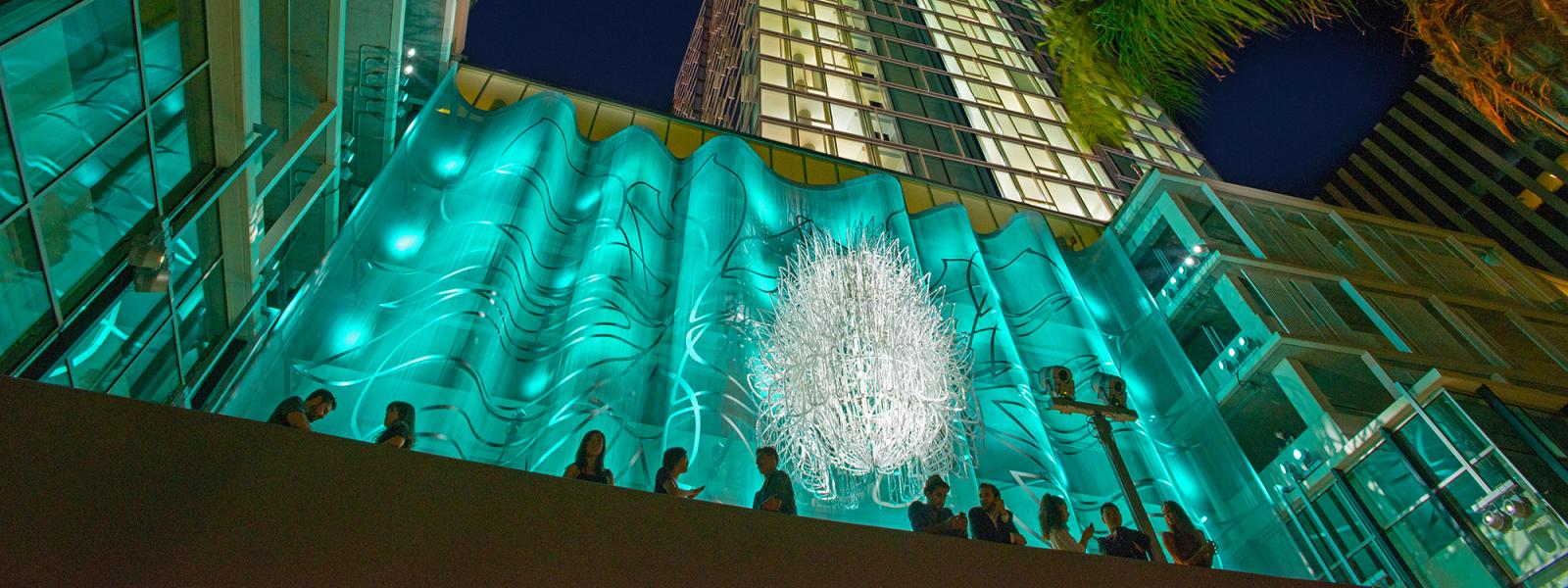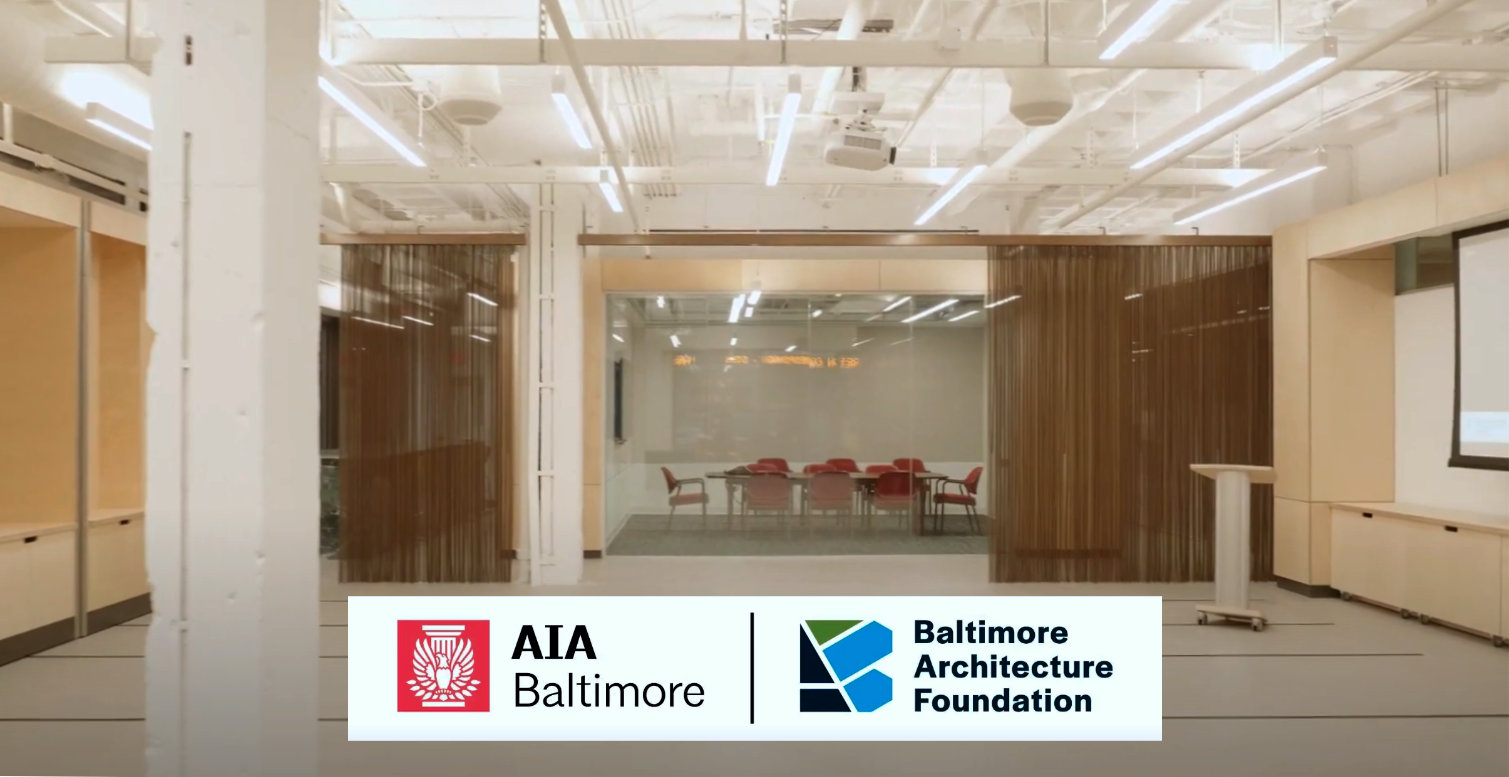Event space designed by Quinn Evans features Fabricoil metal mesh curtains at Center for Architecture & Design in Baltimore
Movable, semi-transparent metal mesh curtain system partitions flexible interior spaces at Center for Architecture and Design for AIA Baltimore & Baltimore Architecture Foundation's new home at One Charles Center
In this video, Mark Nook, AIA, Quinn Evans, remarks on how "located in a building representing the epitome of modernist architecture, we knew our design needed to be simple and elegant, and build upon the legacy of doing so much with so little. But a social critique of modernism says that spaces can feel static, exclusive and inaccessible to the public. Our plan was going to be different –dynamic, open, flexible. So we created multiple spacial zones and experiences with just a few key elements, but we also introduced the ability to move these elements and transform the space, and provide options for a variety of events. The result is a fluid space that is easy to reshape. It's one that establishes design professionals as a resource for the city and invites that city in. It's a place where architecture students can use as a laboratory – a place where emerging professionals can share and test their boldest ideas as they build their careers. A place that encourages all of us to be brave and honest designers.
"Here is a concept animation showing our project bars in motion," says Allison McElheny (AIA, LEED AP BD+C, Quinn Evans). "The main bar in the center of our plan tracks across the Miesian grid. In its different positions, it starts to engage people in the space in different ways. Creating intimate moments for teaching or opening up to encourage wider public gatherings, exhibitions and lectures. All the while leaving the Mies's glassy perimeter free and transparent to stoke public curiosity from all sides, projecting out and drawing people in hopefully in a way that a modernist tower and plaza never did."
Detailing the two distinct systems that Quinn Evans designed to solve this program, McElheny explains, "The first we call project bars. These are thickened millwork walls packed with the functions needed for this space. Programmatic bars that zone the space and conceal function.
The second system is a series of semi-transparent metal mesh curtains that can be drawn out or in to give additional privacy or further partition the spaces as needed.
Most project bars are fixed in place, but the central bar is installed on two moving carriages to allow for multiple configurations for the room. Split apart we can create a gallery with a figure-eight circulation around the double-sided display walls. They can also nest together against the fall western wall to create one large open gallery space or lecture hall, or they can track to the center of room to create two smaller spaces on either side for more focused workshops or meetings. And then by opening or closing the metal mesh curtains, we can start to add layers of privacy and customize the flow of circulation through the space."
"Thinking about materiality," McElheny elaborates, "We knew we wanted to build on Mies's principles of honest materials. Elements of the original building are all left exposed. We have repurposed original marble slabs leftover from a previous building lobby renovation. These form a large reception desk and an almost 20-foot long bar-height work table with views directly out to the courtyard plaza."
The Center for Architecture and Design at One Charles Center serves as a high-profile, visible space to showcase the important role of architectural practice and design, and as a dynamic hub to engage professionals, students, and the public.
According to Suzanne Fraiser (FAIA, 2019 AIA Baltimore President), AIA Baltimore & Baltimore Architecture Foundation's "new home at One Charles Center inspires its members to be part of something larger than themselves, even larger than our profession, and – with our allied organizations – we will collaborate and advocate for design excellence."
"The center was created to scale the influence of architecture and design. It will be where neighbors, civic leaders, institutions, and all professions come together to collaborate, inspire, learn, listen, and most importantly, take action. Here we hope to find common values and work toward shared goals," according to Scott Walters (AIA, LEED AP, Hord Coplan Macht).


